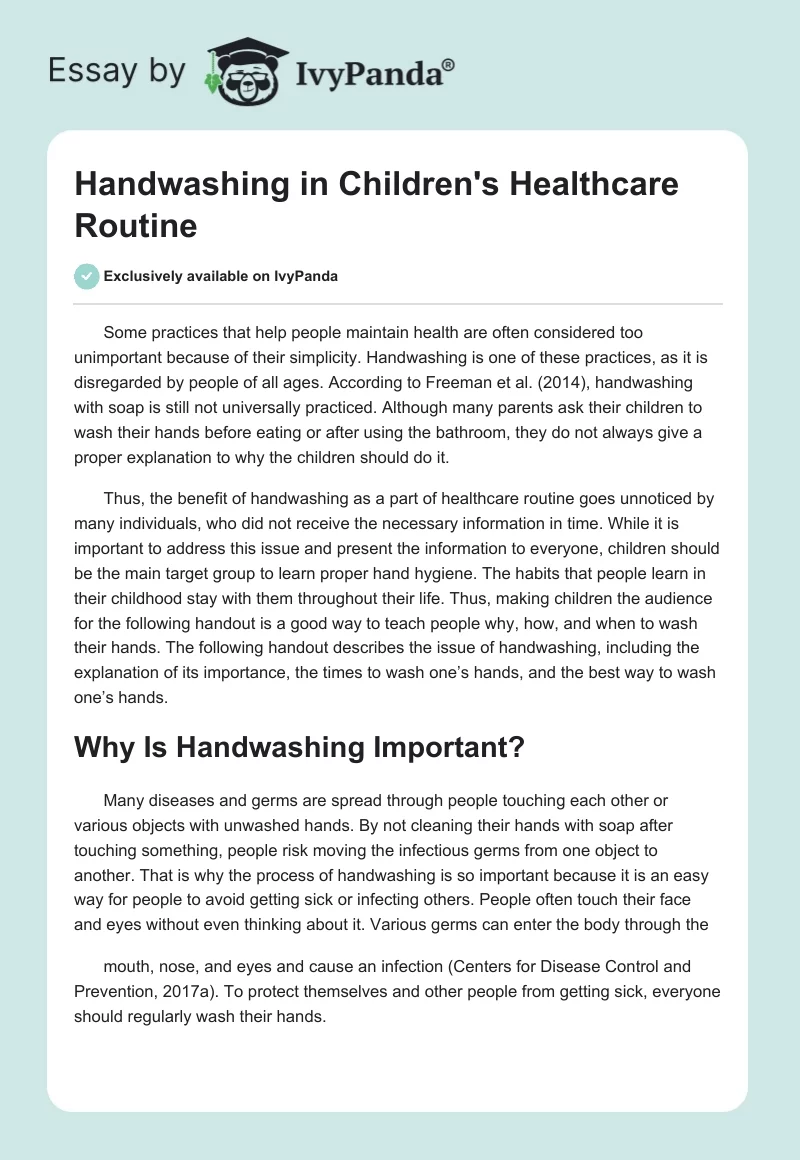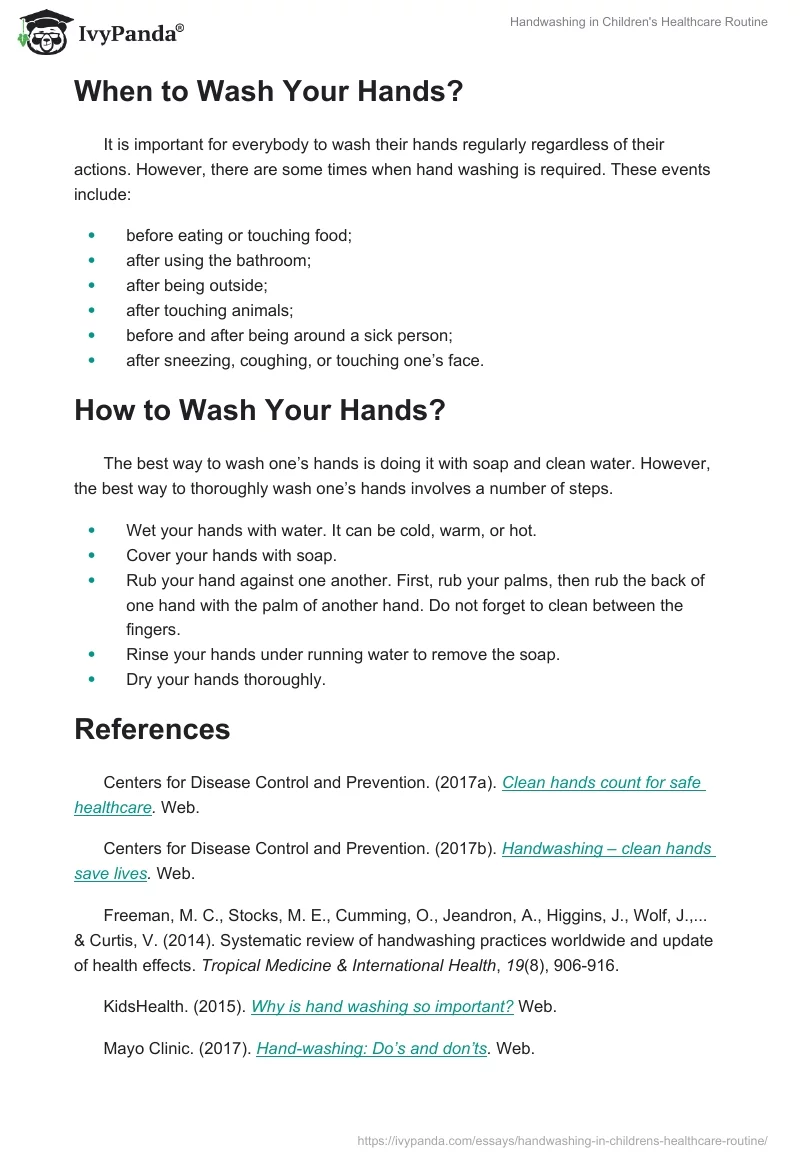Some practices that help people maintain health are often considered too unimportant because of their simplicity. Handwashing is one of these practices, as it is disregarded by people of all ages. According to Freeman et al. (2014), handwashing with soap is still not universally practiced. Although many parents ask their children to wash their hands before eating or after using the bathroom, they do not always give a proper explanation to why the children should do it.
Thus, the benefit of handwashing as a part of healthcare routine goes unnoticed by many individuals, who did not receive the necessary information in time. While it is important to address this issue and present the information to everyone, children should be the main target group to learn proper hand hygiene. The habits that people learn in their childhood stay with them throughout their life. Thus, making children the audience for the following handout is a good way to teach people why, how, and when to wash their hands. The following handout describes the issue of handwashing, including the explanation of its importance, the times to wash one’s hands, and the best way to wash one’s hands.
Why Is Handwashing Important?
Many diseases and germs are spread through people touching each other or various objects with unwashed hands. By not cleaning their hands with soap after touching something, people risk moving the infectious germs from one object to another. That is why the process of handwashing is so important because it is an easy way for people to avoid getting sick or infecting others. People often touch their face and eyes without even thinking about it. Various germs can enter the body through the
mouth, nose, and eyes and cause an infection (Centers for Disease Control and Prevention, 2017a). To protect themselves and other people from getting sick, everyone should regularly wash their hands.
When to Wash Your Hands?
It is important for everybody to wash their hands regularly regardless of their actions. However, there are some times when hand washing is required. These events include:
- before eating or touching food;
- after using the bathroom;
- after being outside;
- after touching animals;
- before and after being around a sick person;
- after sneezing, coughing, or touching one’s face.
How to Wash Your Hands?
The best way to wash one’s hands is doing it with soap and clean water. However, the best way to thoroughly wash one’s hands involves a number of steps.
- Wet your hands with water. It can be cold, warm, or hot.
- Cover your hands with soap.
- Rub your hand against one another. First, rub your palms, then rub the back of one hand with the palm of another hand. Do not forget to clean between the fingers.
- Rinse your hands under running water to remove the soap.
- Dry your hands thoroughly.
References
Centers for Disease Control and Prevention. (2017a). Clean hands count for safe healthcare. Web.
Centers for Disease Control and Prevention. (2017b). Handwashing – clean hands save lives. Web.
Freeman, M. C., Stocks, M. E., Cumming, O., Jeandron, A., Higgins, J., Wolf, J.,… & Curtis, V. (2014). Systematic review of handwashing practices worldwide and update of health effects. Tropical Medicine & International Health, 19(8), 906-916.
KidsHealth. (2015). Why is hand washing so important? Web.
Mayo Clinic. (2017). Hand-washing: Do’s and don’ts. Web.
NHS Choices. (2017), How to wash your hands. Web.


